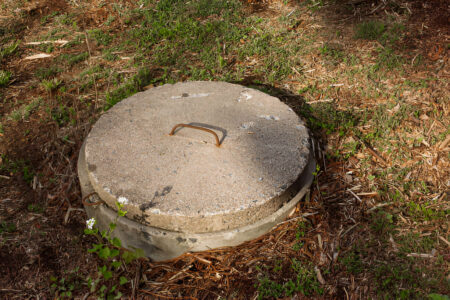A blocked outdoor drain can quickly become a nuisance, causing water to pool and potentially leading to more severe drainage issues. Whether it’s caused by leaves, dirt, or other debris, clearing a blocked outdoor drain promptly is essential to prevent water damage and maintain proper drainage. In this guide, we’ll walk you through the steps to identify and clear a blocked outdoor drain effectively.
Understanding the Causes of Blocked Outdoor Drains
Common Culprits
Outdoor drains can become blocked for several reasons. Common culprits include fallen leaves, dirt, debris, and even litter. These materials can accumulate over time, leading to a blockage that prevents water from flowing freely.
Seasonal Factors
Different seasons can bring unique challenges for outdoor drains. In autumn, falling leaves are a primary cause, while in spring, pollen and seeds can contribute to blockages. Being aware of these seasonal factors can help in maintaining clear drains year-round.
Tools You Will Need
Basic Tools
- Rubber gloves
- A garden hose
- A bucket
- A drain rod or plumbing snake
- A screwdriver (for removing drain covers)
Advanced Tools
- Wet/dry vacuum
- Pressure washer
- Drain cleaning chemicals (as a last resort)
Steps to Clear a Blocked Outdoor Drain
Step 1: Safety First
Before you start, ensure you have the necessary safety equipment. Wear rubber gloves to protect your hands from dirt and any harmful substances. If you’re using chemicals, also wear eye protection and follow the product instructions carefully.
Step 2: Remove the Drain Cover
Using a screwdriver, carefully remove the drain cover. Place the screws in a safe location to avoid losing them. Inspect the drain cover for any visible blockages and clean it if necessary.
Step 3: Remove Surface Debris
With the drain cover removed, clear away any visible debris from the surface of the drain. This includes leaves, dirt, and any other materials that might be obstructing the drain.
Step 4: Use a Drain Rod or Plumbing Snake
Insert a drain rod or plumbing snake into the drain. Push it down gently but firmly, and twist it to break up the blockage. Continue this process until you feel the obstruction has been cleared.
Step 5: Flush the Drain with Water
Once you’ve cleared the blockage, flush the drain with water from a garden hose. This helps to ensure that any remaining debris is washed away. If the water flows freely, the blockage has likely been cleared.
Step 6: Use a Wet/Dry Vacuum (if needed)
If the blockage persists, a wet/dry vacuum can be used to remove more stubborn debris. Set the vacuum to the wet setting and place the hose over the drain opening. Turn on the vacuum to suck out the debris.
Step 7: Apply Pressure Washing (for Severe Blockages)
For severe blockages, a pressure washer can be very effective. Attach the pressure washer to your garden hose and use it to blast away any remaining obstructions in the drain. Be careful not to damage the drain pipes with excessive pressure.
Preventative Measures
Regular Maintenance
Regularly cleaning your outdoor drains can prevent blockages from occurring. Make it a habit to check and clean your drains at least once a month, especially during seasons when debris is more likely to accumulate.
Install a Drain Cover
Installing a drain cover can help keep large debris, such as leaves and branches, out of your drain. This simple measure can significantly reduce the likelihood of blockages.
Landscaping Tips
Consider landscaping solutions that minimize debris near your drains. For example, planting grass or ground cover around your drains can help prevent soil erosion and reduce the amount of dirt that enters the drain.
When to Call a Professional
Persistent Blockages
If you’ve tried all the DIY methods and the blockage persists, it may be time to call a professional plumber. Persistent blockages can indicate more severe issues within your drainage system that require expert attention.
Severe Flooding
In cases where a blocked outdoor drain has caused severe flooding, professional help is essential. A plumber can assess the situation and provide a long-term solution to prevent future blockages and water damage.
Conclusion!!
Clearing a blocked outdoor drain doesn’t have to be a daunting task. With the right tools and a bit of know-how, you can tackle most blockages yourself. Regular maintenance and preventative measures can keep your drains flowing smoothly and help you avoid more severe drainage issues. Remember, if all else fails, don’t hesitate to call a professional to ensure your drainage system remains in good working order.
FAQs
How often should I clean my outdoor drains? It’s recommended to clean your outdoor drains at least once a month, especially during seasons with high debris, such as autumn and spring.
Can I use bleach to clear a blocked outdoor drain? While bleach can help with minor blockages and disinfecting, it’s not usually effective for clearing significant debris. Mechanical methods like using a drain rod or pressure washer are more effective.
What should I do if my outdoor drain smells bad? Bad odors from your drain can be a sign of a blockage or buildup of organic material. Cleaning the drain thoroughly and flushing it with water can help eliminate the smell.
Is it safe to use a pressure washer on my outdoor drain? Yes, using a pressure washer can be safe and effective for clearing blockages. However, use caution to avoid damaging the drain pipes with excessive pressure.
Can tree roots block my outdoor drain? Yes, tree roots can infiltrate and block outdoor drains. If you suspect this is the case, it’s best to call a professional plumber to address the issue.




